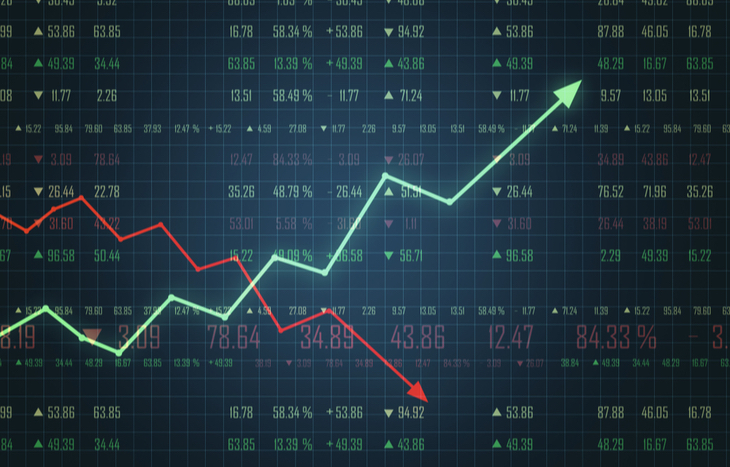Why Stocks Go Up and Down
As investors, we never like seeing the value of stocks decrease. We would never choose to ever see stocks go down, only up, if we could have it our way. Of course, that isn’t the way of the world, and this article will cover more on why stocks go up and down. Stocks may have increased as a whole in the long term, but when you zoom in, there are going to be ebbs and flows.
While this can be frustrating, especially if you pay close attention, it’s the risk we must be willing to tolerate as investors. In general, there can be no reward without any risk.
But this doesn’t explain why there are risks or what specific forces cause stocks to move up and down. In our economy, there are certain market forces that consistently cause stocks to ebb and flow. However, the exact way in which these forces will work in future cycles is incredibly difficult to predict. This is why speculative investing is such a challenge.
There are also less predictable, less cyclical forces that can cause a drop in stock prices. It’s important to understand the combination of these factors and how it paints a complex and nuanced picture of the market.
There are a number of forces that can cause stocks to go up and down. We’ll cover some of the highlights here.

Why Stocks Go Up And Down: Supply And Demand
Supply and demand is one of the most basic principles of economics, and stocks are not exempt from it. When the demand for a stock exceeds supply, the price rises and when supply exceeds demand, the price falls.
We were able to see this play out in almost real-time with GameStop and other meme stocks. Followers of r/WallStreetBets wanted to upset hedge fund managers who make money shorting stocks. Thus, they bought up shares of GameStop and other stocks en masse, causing the price of those stocks to rise rapidly.
GameStop stock went from around $5 in late 2020 to a peak of over $300 in early 2021. Since then, the buying frenzy has slowed, and GameStop shares are down to around $100.
Fundamentals
Fundamentals are one of the things that analysts, in particular, follow closely. Earnings per share (EPS) and price-to-earnings (P/E) ratio are two of the fundamentals that are most commonly seen as indicative of a company’s financial strength.
A high EPS is good because it means a company is profitable, so it has more profits to distribute to shareholders. One way it may do this is with dividends. A high P/E ratio, on the other hand, is not considered good, because it means the price you pay is high relative to the company’s earnings.
However, the sector matters when considering a stock’s fundamentals. For example, if you are looking at electric vehicles or some other startup-heavy sector, you may see a low EPS or a high P/E ratio. But in such sectors, that may be the norm, so we have to view these numbers in the context of the company’s sector.
If you have a company with unfavorable numbers compared to its competitors, it may be a red flag for investors, causing the stock price to drop. Of course, the inverse is also true.
Market Cycles
The stock market has a cyclical nature to it, and that can have some bearing on how stock prices move. Certain stocks are considered cyclical, which means they will be sensitive to the boom-bust economy. Examples of cyclical stocks are retail, housing and automotive.
One way to think about this idea is in the context of bear markets and bull markets. One of the worst bear markets in recent history was seen with the Great Recession. That caused a huge drop in real estate stocks. For example, Vanguard’s VNQ real estate ETF plummeted from around $81 in 2007 to under $25 in 2009.
However, after the Great Recession was the longest bull market in history. VNQ topped $115 in 2021, higher than its pre-recession level. This is not unusual of cyclical stocks where a stock can plummet in a bear market, only to soar higher during the next bull market.
Investor Sentiment
Investor sentiment matters, not only for individual stocks but sometimes for entire sectors or even entire industries. Again, this can go both ways. Perhaps investors get excited about an emerging industry and invest in droves, even if the fundamentals would suggest that investing may not be the best idea.
Or perhaps a news story comes out that paints a company in a negative light. Even if the company’s fundamentals are good, investors may be driven to sell their shares, causing the price to drop. For better or for worse, investors tend to be quite sensitive to the constant news cycles.
How Government Policy Affects Why Stocks Go Up And Down
Changing administrations can cause significant changes in our lives, and our stock portfolios. There are many actions a government can take that may impact the stock market, including incentives for companies, tariffs and regulations. For example, imagine a government saying it would ban the sale of gasoline-powered cars by 2050. As you can imagine, that kind of policy would send oil company stocks into the dustbin.
On the other hand, the government can bolster or even save entire industries. It has done so with bailouts; TARP in 2008, and the airline bailout in 2020 are just a couple of examples. These bailouts have saved companies from complete disaster and by extension, their stocks, too.





